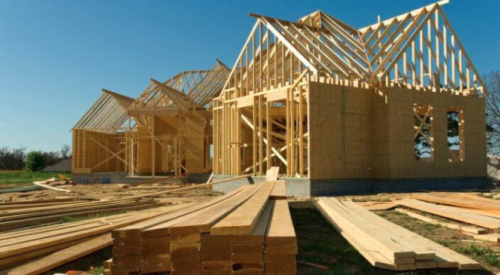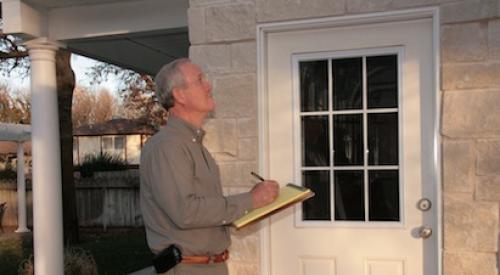|
At Venture Homes, a J.D. Power winner the past two years, CEO Robert White credits the company’s success more to its corporate culture than its product design.
|
Venture Homes in Marietta, Ga., was the Atlanta market’s J.D. Power winner for the second year a row in 2003, so president Robert White must have a clue or two about quality. As it turns out, he has an interesting perspective that includes color as an important component of quality design.
“My take on where shoppers see quality is that they realize they have to make trade-offs,” he says. “One that buys a $250,000 house would rather have a $350,000 house. The features are more desirable, or it’s bigger. We’re always trying to find a way to incorporate the features of a $350,000 house into our $250,000 product.”
Controlling Color
One way Venture plans to deliver a higher level of perceived value in 2004 is by employing a colorist to meticulously create a palette that enhances the street scenes in every community. “When we did gap analysis of the expectations of our customers versus what we produce in our finished product, we found we needed to get more in tune with them on land planning and also exercise more control of streetscapes,” White says.
“We now offer fewer color choices, but we convince our buyers that we offer more value by designing streetscapes and putting tight covenants on the community to keep it looking the way we designed it.”
In Atlanta, the most revolutionary aspect of a growing appreciation for color shows most in roofs.
“A colorist will tell you that roofs are 25% of the color impact of a community,” White says. “And yet here, they were always regarded as unimportant. Until recently, all you saw was black roofs. We now use five colors just to create contrast and distinction, an impression of value in the neighborhood that’s greater than its installed cost. But they all have to blend together, and that’s where a colorist comes in.”
A Service-Centered Culture
However, White doesn’t deny that Venture’s J.D. Power success owes more to corporate culture than to design:
“After buyers get into their new home, quality is best described in one word,” he says, “and it’s the one Crosby and Deming and all the quality management gurus used — conformance. Your product and service have to retain the customer’s good will over the long haul, not just until a year after closing.”
If the builder concentrates too much on flash, the design and feature elements that attract the attention of home shoppers, good will might disappear where you need it most, in the word-of-mouth reputation that buyers communicate to the market. “That’s why we make tough choices about materials and construction methods,” White says. “In some cases, we have to make tough choices between what shines upfront and what has enduring value.
“Then our salespeople have to communicate the reasons for those choices to shoppers and educate them on why flash is not the way to go.”
Raise Bar, Don’t Lower Expectations
White agrees with Eliant that model homes define the level of quality that shoppers and buyers expect but is uneasy with the concept of lowering expectations:
“The models should not have unusual products and materials in them, but when it comes to caulk joints and trim detail, they should be executed to a high level— one you have to stretch to achieve in the field, on every house,” he says. “We tell our trade contractors, ‘If you want to see what we expect, just go down to the model and take a look!’ Our industry is ill-served by people who want to lower the bar. Lowering expectations is wrong.”
Customers understand when builders struggle to reach model home quality in the field, he says. “They’ll cut you some slack as long as you show them that you care about their home, and the way to do that is by responding fast when a problem occurs. Three years ago, we were proud that we got all our warranty work done within 14 days of the request. Now, 86% is completed on the first visit. We change our systems all the time to meet the ever-increasing expectations of buyers.”
What White Does at IBS
When White attends the International Builders’ Show, he spends more time communicating with manufacturers that already supply his jobs than looking for new technologies. “We want a better alliance,” he says. “The closer we can bring manufacturers to our job sites, the better team we’ll build.
“We’re a TQM company, and our culture is our greatest asset. We practice open-book management. We engage our employees fully in our enterprise. What they do for our customers looks special, but it’s not to us. It’s the way we treat all our people.”
Venture Homes has another goal for its team attending IBS: to get a closer look at the products, materials and construction technologies employed by competitors. “If something we don’t use seems to be working for a competitor, we’ll stop by that booth to learn more about it,” White says. “If they have a new wrinkle, we’ll go to our supplier and ask what they think about it. It’s all part of bringing our manufacturers closer to our jobs and our trades.”
In White’s case, quality obviously is a moving target, subject to the constant interplay of changing customer desires and expectations, and Venture’s continuous improvement in people and systems to meet those shifting targets. Fit and finish, materials and workmanship have to meld on a high plane with service and design — right under a very colorful roof.












